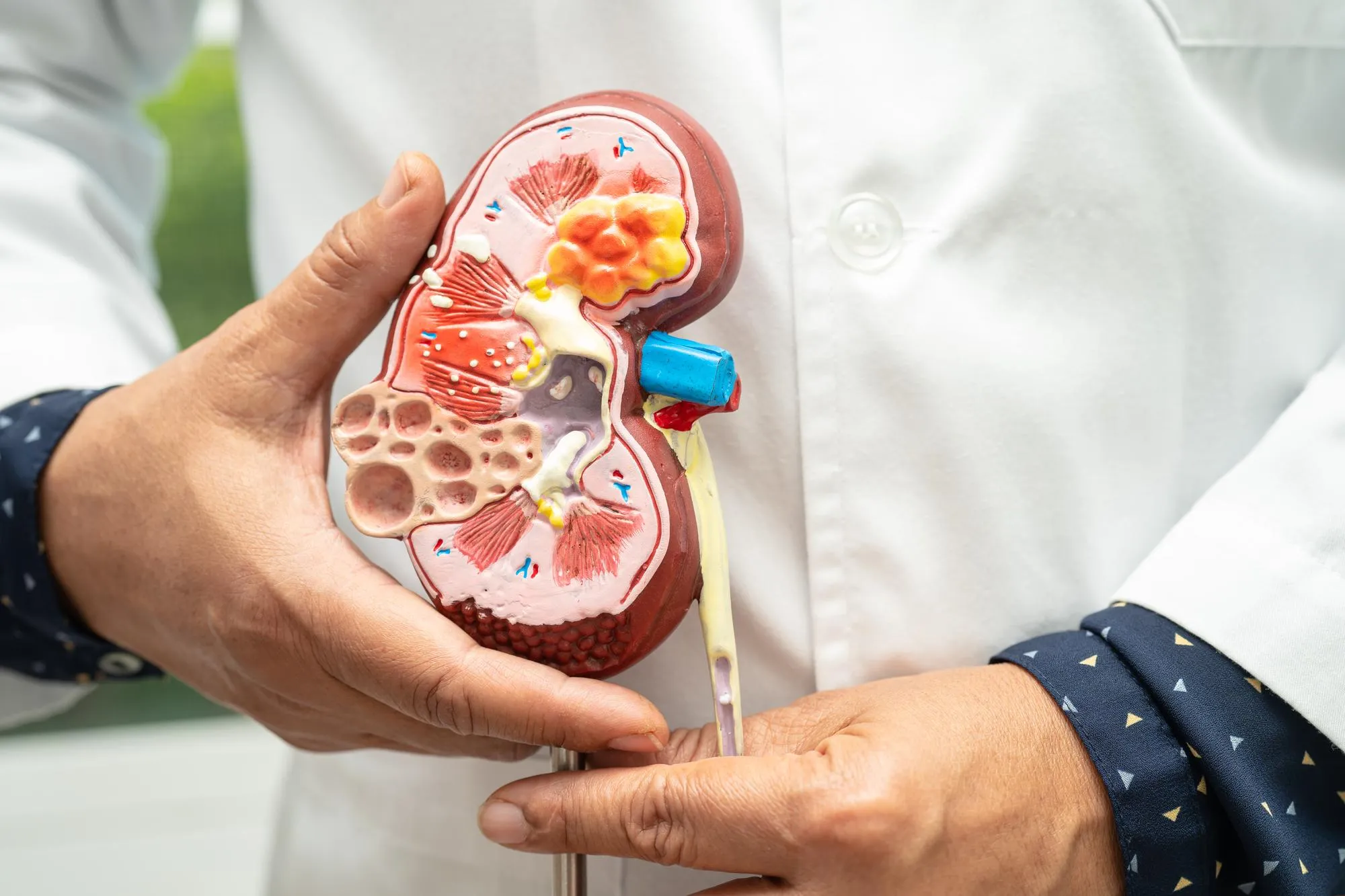In a groundbreaking study that could revolutionize treatments for chronic kidney disease, a team of scientists has successfully regenerated functional interspecies chimeric kidneys in vivo. This scientific achievement, led by Toshinari Fujimoto and colleagues from The Jikei University School of Medicine in Tokyo, Japan, paves the way for a potential alternative to kidney transplantation and dialysis. Published in Scientific Reports, the study with DOI: 10.1038/s41598-019-43482-2 provides critical insights into the future of human kidney regeneration using a novel nephron progenitor cell (NPC) replacement strategy.
Chronic kidney disease (CKD) is a growing health concern globally, affecting millions of individuals and imposing significant burdens on healthcare systems. The limited treatment options currently available, including dialysis and organ transplantation, are often accompanied by challenges such as long-term side effects, risks of rejection, and a dire shortage of donor organs.
In a thrilling development, a new study has demonstrated that by transplanting NPCs from a donor into the developing kidney (metanephric mesenchyme) tissue of another species, functional kidneys can be created. Previously, the team developed a transgenic mouse model (the Six2-iDTR mouse), which allowed for the drug-induced elimination of native NPCs. This process cleared the way for complete replacement by either donor mouse or rat NPCs, which successfully generated new nephrons (the functional filtration units of the kidney) in laboratory conditions.
Taking a bold leap forward, the researchers tested the potential for in vivo interspecies nephron regeneration. Rat NPCs containing renal progenitor cells, along with diphtheria toxin for ablation, were injected into the kidney tissue of the Six2-iDTR mice embryos. These were then transplanted into recipient rats that had received immunosuppressants. The result – rat/mouse chimeric kidneys with functional connections to host blood vessels and proper filtration capabilities.
The significance of these findings cannot be overstated, as it introduces a viable method to potentially generate human kidneys through interspecies techniques. Here, we delve deeper into the study, its implications, and the future of regenerative medicine in the context of kidney diseases.
The Quest for a Kidney Regeneration Solution
The high prevalence of CKD has been a motivator for research focused on alternative treatments. As early as 2010, a systematic review revealed the global burden of CKD (Millis KT, et al., doi: 10.1038/ki.2015.230) . The growing need for treatment options, highlighted by Liyange T, et al. (doi: 10.1016/S0140-6736(14)61601-9), coupled with systematic reviews illustrating the benefits of kidney transplantation over dialysis (Tonelli M, et al., doi: 10.1111/j.1600-6143.2011.03686.x), has fueled the search for viable methods of kidney creation.
The Science of Generating Kidneys: An Interspecies Approach
By eliminating native NPCs in the Six2-iDTR mice and replacing them with rodent NPCs from either mice or rats, the stage was set for in vivo experimentation. Fujimoto and his team’s approach involved a detailed strategy that benefited from prior breakthroughs in understanding kidney organogenesis (Taguchi A, et al., doi: 10.1016/j.stem.2013.11.010) and the derivation of nephron organoids from human pluripotent stem cells (Morizane R, et al., doi: 10.1038/nbt.3392).
An Exercise in Precision and Patience
This sophisticated process demanded precision in timing the NPC transplantation and managing the immune response in the recipient rats to prevent rejection. Previous studies have elaborated on the methods of kidney transplantation and the importance of immunosuppression for successful graft acceptance (Rudge C, et al., doi: 10.1093/bja/aer399; Clancy MJ, et al., doi: 10.1097/TP.0b013e3181abbe9d).
The Promising Outcome
The success of these chimeric kidneys in vivo, with functional glomeruli and a vascular system, is an exhilarating breakthrough. It opens a new horizon for regenerative medicine and transplant biology. By potentially transferring this technique to generate human kidneys, we could be entering a new era where the shortage of donor organs could be alleviated.
Future Prospects and Challenges
The promising findings elicit enthusiasm and caution in equal measure. While the prospect of human kidney regeneration is thrilling, much work remains to refine the process and ensure safety and efficacy in clinical settings. The path to applying this technology to humans will require rigorous testing, ethical considerations, and likely, advancements in immunosuppressive therapies.
References and Further Reading
1. Millis KT, et al. (2015). “A systematic analysis of worldwide population-based data on the global burden of chronic kidney disease in 2010.” Kidney Int. doi: 10.1038/ki.2015.230.
2. Liyange T, et al. (2015). “Worldwide access to treatment for end-stage kidney disease: A systematic review.” Lancet. doi: 10.1016/S0140-6736(14)61601-9.
3. Tonelli M, et al. (2011). “Systematic review: kidney transplantation compared with dialysis in clinically relevant outcomes.” Am. J. Transplant. doi: 10.1111/j.1600-6143.2011.03686.x.
4. Rudge C, et al. (2012). “International practices of organ donation.” Br. J. Anaesth. doi: 10.1093/bja/aer399.
5. Taguchi A, et al. (2014). “Redefining the in vivo origin of metanephric nephron progenitors enables generation of complex kidney structures from pluripotent stem cells.” Cell Stem Cell. doi: 10.1016/j.stem.2013.11.010.
6. Morizane R, et al. (2015). “Nephron organoids derived from human pluripotent stem cells model kidney development and injury.” Nat. Biotechnol. doi: 10.1038/nbt.3392.
Keywords
1. Kidney Regeneration
2. Interspecies Chimeric Kidneys
3. Nephron Progenitor Cells
4. Chronic Kidney Disease Treatment
5. Regenerative Medicine Kidneys
Final Thoughts
The pathbreaking work of Fujimoto T and colleagues signifies a momentous stride in the ongoing quest to conquer chronic kidney disease. As we look ahead, we must support continued research and collaboration in the field of regenerative medicine, bioengineering, and transplantation science. Through such endeavors, we edge closer to the day when solutions like in vivo kidney regeneration may transform the lives of those suffering from kidney-related diseases, granting them a renewed chance for health and vitality.
Disclaimer
This article is a science-based news piece and does not offer medical or investment advice. It is based on research findings published in the journal Scientific Reports. Always consult with a qualified healthcare professional before making decisions related to health and treatments.
